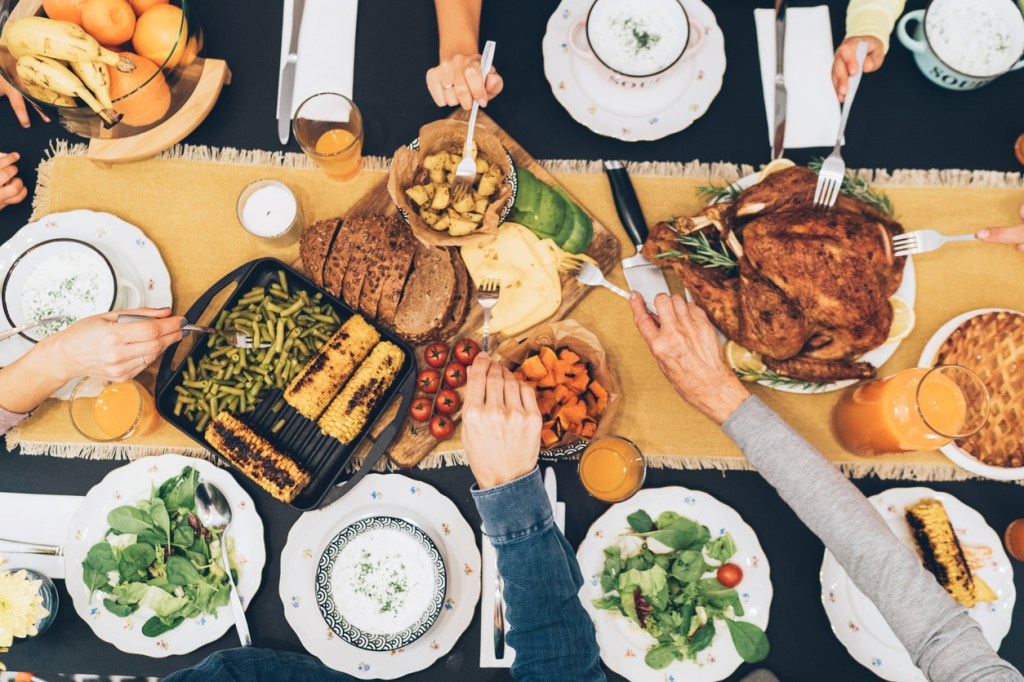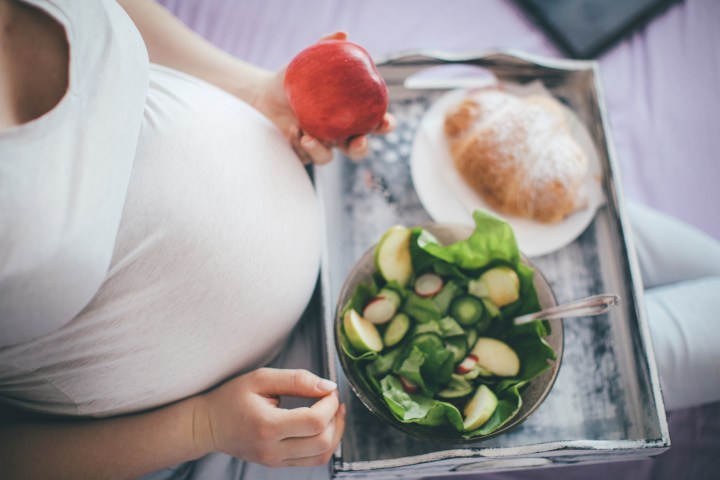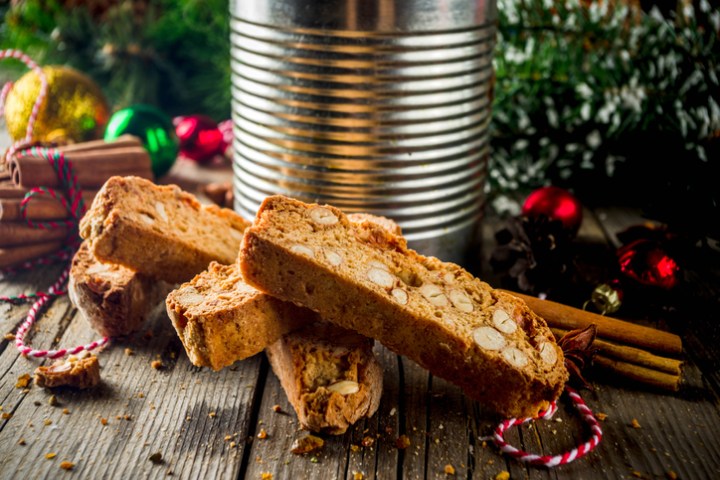How to cut calories during the festive season

The festive season is notorious as a time for indulgence and overeating, but it is possible to both enjoy good food and eat healthily through the food swap method.
Where food swapping differs from other diets is in its free rein: no food is banned. You lose weight by making educated decisions and informed choices. What matters is that you make wiser and healthier choices each time you eat. Keep reading to discover easy food swaps for some popular Christmas snacking options:
Swap: Jacob’s Hovis digestive
Per biscuit: calories 37; fat 2.2g; sugars 2.2g; salt trace
Digestives look wholesome but are often highly sweetened and over-refined so that they contain little fibre. In this case, the biscuits contain both sugar and glucose syrup – unnecessary in a savoury biscuit intended for cheese.
For: Jacob’s cream crackers
Per cracker: calories 35; fat 1.1g; sugars 0.1g; salt 0.1g
Cream crackers remain the best-selling of all crackers and crispbreads. Made with wheat flour, vegetable oil, salt and yeast, they are low in fibre but also relatively low in calories and contain half the fat of the digestive.
Swap: Stilton
Per 30g (1oz): calories 125; fat 10.6g; salt 0.6g
This English blue cheese is renowned for its strong flavour and smell. Unfortunately, it is also high in fat and has less than half the calcium content of Cheddar. Some varieties contain a lot more salt, so check the label.
For: Gorgonzola
Per 30g (1oz): calories 92; fat 7.7g; salt 0.7g
A creamy blue alternative to Stilton, Gorgonzola saves you 33 calories and almost 3g of fat per serving if you eat it instead of Stilton. Like other blue cheeses it can be salty, so it’s best served sprinkled into salads.
Swap: Brie
Per 30g (1oz): calories 90; fat 7.5g; salt 0.5g
Although it has a reputation for being high in fat, Brie contains less fat and calories than Cheddar and Stilton. It is one of the best sources of calcium from among the softer cheeses, supplying 540mg per 100g (3.oz). Interestingly, the rind is a good source of vitamin B1 (thiamine), essential for healthy nerves as well as for energy production. There are healthier options, however.
For: Camembert
Per 30g (1oz): calories 85; fat 6.6g; salt 0.5g
As rich and creamy as it tastes, Camembert does in fact contain one-third less fat than Cheddar and even less than its creamy French counterpart, Brie. You also save 5 calories per serving with the switch. As with Brie, the rind contains vitamin B1, so don’t throw it away.
Swap: luxury fruit and nuts mix
Per 100g (3.oz) serving: calories 456; fat 35.4g; sugar 24.5g; salt trace
This mix comprises raisins, almonds, pistachio nuts, Brazil nuts, cashew nuts, pecan nuts and cranberries. A 30g (1oz) handful supplies a fifth of the recommended daily amount of vitamin E. Beware of the addition of chocolate chips to a mix like this. The fat comes from the oil in the nuts and it’s easy to consume several hundred calories as you nibble on the delicious mix. Best reserved for an occasional treat.
For: organic dried apricots
Per 100g (3.oz) serving: calories 285; fat 0.5g; sugar 34.5g; salt trace
Non-organic dried apricots are often treated with the chemical sulphur dioxide to preserve their bright orange colour; however, its addition is unnecessary and the chemical can trigger allergic reactions, including asthma, in some people or cause gastrointestinal discomfort in others. Those that don’t contain sulphur dioxide tend to be a darker colour. They are an excellent source of potassium and a good source of iron. Plus they contain 144 fewer calories per 100g (3.oz) than the luxury mix.
Swap: hot chocolate with whipped cream (medium with whole milk)
Per serving: calories 549; fat 27g; sugars 47g; salt trace
A large hot chocolate with cream has the calories and fat content of three hot dogs. It also provides more than half a woman’s daily sugar intake and nearly one-third of a man’s. Even worse is a white hot chocolate, which contains a whopping 719 calories and 33.4g of fat in a large mug. That is more than you would get in a burger chain coffee served with 12 of their creamers and 32 packets of sugar.
For: hot chocolate (medium with skimmed milk, no cream)
Per serving: calories 217; fat 1.9g; sugars 40.1g; salt trace
Reduce the serving size, switch to skimmed milk and cut out the cream, and you can sip a hot chocolate in the knowledge that it contains 13 times less fat. It is still a highly sweetened drink, but less of an indulgence than the whipped cream variety. Save 332 calories.
Swap: shortbread
Per 2-bar serving: calories 245; fat 14.5g; sugars 8.8g; salt 0.2g
Two bars of coffee shop shortbread comprise almost one-third of their weight in butter and other fats. Sugar levels are acceptable, but there are better snack options, particularly if you are looking for something to eat with a calorific coffee.
For: almond biscotti
Per biscuit: calories 147; fat 5.8g; sugars 8.6g; salt 0.2g
Designed for dunking into your coffee, these hard-baked Italian biscuits, with ground and flaked almonds, are a perfect way to enjoy a long-lasting snack (they take some crunching) and save on calories and fat in the process. Save 98 calories and 8.7g of fat.





